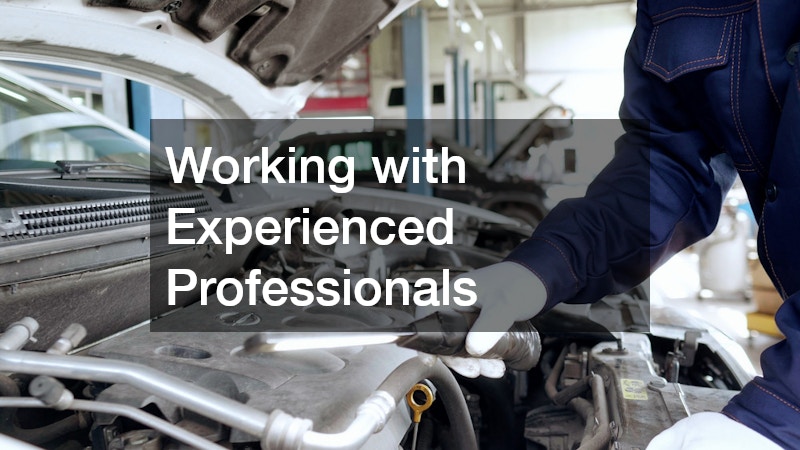How Classic Car Restoration Can Increase Your Cars Value
Classic car restoration is a fascinating journey that not only revives the glory of aged vehicles but also significantly boosts their market worth. In today’s collector’s market, a well-restored classic car can fetch prices much higher than their unrestored counterparts. Understanding the nuances of restoration and its impact on a car’s value is essential for any classic car enthusiast or investor seeking high returns.
What is Classic Car Restoration?
Definition and Overview
Classic car restoration refers to the process of repairing and upgrading old or classic vehicles to return them to their original condition or enhance them beyond their former glory. This complex process often involves disassembly, inspection, repair, and replacement of all necessary components, ensuring each detail aligns with the car’s historical accuracy.
At its core, restoration requires a blend of historical knowledge, mechanical skill, and a passion for preserving the past.
While some restoration projects focus on maintaining authenticity, others may incorporate modern technology to improve performance or meet contemporary standards. Regardless of the approach, the ultimate goal remains the same: to honor the car’s heritage while maximizing its aesthetic and functional appeal. The outcome should be a classic car that looks, feels, and performs remarkably on the road.
The restoration market has grown substantially, with enthusiasts and professionals alike dedicated to the craft. This growth reflects the increasing appreciation for automobiles as both historical artifacts and investment assets. As demand rises, the value of well-restored classics continues to climb, making restoration an exciting and potentially profitable venture.
Types of Restoration
There are several types of restoration, each suited to different needs and goals. Cosmetic restoration focuses on the vehicle’s aesthetic aspects, addressing issues with the paint, upholstery, and other visible elements to bring the outward appearance back to life. This type enhances visual appeal and is ideal for cars that already have sound mechanical components.
Mechanical restoration, on the other hand, delves into the vehicle’s performance attributes, addressing engine, transmission, brakes, and other mechanical systems. This form is crucial for cars that need improved functionality and reliability, ensuring the vehicle is not only roadworthy but adheres to safety standards. A mechanically restored car often boasts a significant increase in performance, which can also boost its market value.
Full restoration combines both cosmetic and mechanical efforts, aiming to rejuvenate every aspect of the car to its original or improved state. This comprehensive approach is often reserved for cars of significant historical or personal value. While the investment required for full restoration is substantial, the potential return in terms of monetary and sentimental value is equally impressive.
How Restoration Can Increase Your Car’s Value
Preservation of Historical Significance
Restoring a classic car to its original condition is tantamount to preserving a piece of history. This preservation of historical significance enhances the vehicle’s value, attracting collectors who are willing to pay a premium for authenticity. Maintaining original features and documenting the car’s history can elevate its market value significantly.
Many collectors seek vehicles that tell a story, reflecting eras of automotive innovation and historical events. A car accurately restored with a focus on authenticity resonates with these buyers, transforming it into a coveted item in their collections. This aspect of restoration turns classic cars into timeless artifacts with immense value beyond just their physical attributes.
Enhanced Aesthetics and Mechanical Performance
One of the most compelling reasons restoration increases a car’s value is the remarkable improvement in aesthetics and mechanical performance. A restored classic car showcases a flawless exterior and pristine interior, captivating those who behold it. This visual excellence, coupled with the prestige of owning a piece of automotive history, justifies a higher market price.
Mechanical performance is equally crucial; a restored car should offer both reliability and an exhilarating driving experience that matches modern standards. Enhancements in functionality and safety ensure that the car is not just a static exhibit but a fully operational masterpiece. This blend of beauty and performance attracts buyers who value both form and function.
Maximizing ROI in Classic Car Restoration
Choosing the Right Projects
Maximizing return on investment (ROI) in classic car restoration starts with choosing the right projects. Vehicles that are rare, have limited editions, or are highly sought after usually offer a higher return potential. Thorough research and understanding of market demand are crucial when selecting a project, ensuring that the investment aligns with potential buyer interest.
Additionally, consider the vehicle’s condition before restoration. Cars requiring minimal mechanical work but needing cosmetic improvements might offer a quicker return compared to those needing extensive overhauls. Balancing initial investment with anticipated sale value serves as a strategic move in the restoration game.
Working with Experienced Professionals
The success of a classic car restoration project heavily depends on working with experienced professionals. Knowledgeable restoration experts possess the skills and expertise required to authentically restore a vehicle while addressing all the intricate details. Collaborating with reliable workshops ensures that both cosmetic and mechanical aspects are handled with the highest standards.
Professional restorers know the importance of sourcing original parts and materials to maintain authenticity, a key component in increasing a car’s value. Furthermore, they can provide valuable insights and recommendations, guiding owners in making informed decisions throughout the restoration process. The attention to detail and craftsmanship offered by seasoned professionals can significantly enhance the outcome of any restoration project.
Classic car restoration is a rewarding endeavor that merges history, artistry, and mechanics to produce exceptional and valuable vehicles. By preserving historical significance, enhancing aesthetics, and improving mechanical performance, restoration substantially elevates a car’s worth. Understanding the various types of restoration and their impact on value enables enthusiasts to make informed decisions that reflect both passion and investment strategy.

